
|
Astronomy Picture Of the Day (APOD)
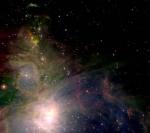 UKIRT: Aloha Orion
UKIRT: Aloha Orion
5.01.2005
At the edge of a dense molecular cloud, filaments of gas, cosmic dust, and a multitude of young stars beckon in this penetrating image of the Orion Nebula. Alluring structures in the well-known star...
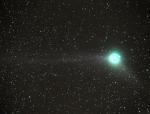 Comet Machholz in View
Comet Machholz in View
4.01.2005
Good views of Comet Machholz are in store for northern hemisphere comet watchers in January. Now making its closest approach to planet Earth, the comet will pass near the lovely Pleiades star cluster on January 7th and the double star cluster in Perseus on January 27th as Machholz moves relatively quickly through the evening sky.
 Milky Way Illustrated
Milky Way Illustrated
3.01.2005
What does our Milky Way Galaxy look like from afar? Since we are stuck inside, and since opaque dust truncates our view in visible light, nobody knows for sure. Drawn above, however, is a good guess based on many different types of observations.
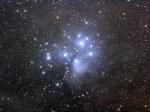 The Pleiades Star Cluster
The Pleiades Star Cluster
2.01.2005
Perhaps the most famous star cluster on the sky, the Pleiades can be seen without binoculars from even the depths of a light-polluted city. Also known as the Seven Sisters and M45, the Pleiades is one of the brightest and closest open clusters.
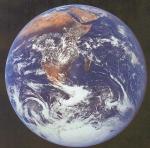 Welcome to Planet Earth
Welcome to Planet Earth
1.01.2005
Welcome to Planet Earth, the third planet from a star named the Sun. The Earth is shaped like a sphere and composed mostly of rock. Over 70 percent of the Earth's surface is water. The planet has a relatively thin atmosphere composed mostly of nitrogen and oxygen.
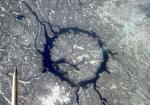 Manicouagan Impact Crater
Manicouagan Impact Crater
31.12.2004
Manicouagan Crater in northern Canada is one of the oldest impact craters known. Formed about 200 million years ago, the present day terrain supports a 70-kilometer diameter hydroelectric reservoir in the telltale form of an annular lake. The crater itself has been worn away by the passing of glaciers and other erosional processes.
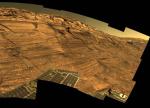 A Year of Mars Roving
A Year of Mars Roving
30.12.2004
Landing on Mars in January, NASA's twin rovers Spirit and Opportunity have now each spent over 330 sols roving the martian surface. Still healthy and well in to extended missions, the golfcart sized robots have operated five times longer than planned.
 M81 and M82: GALEX Full Field
M81 and M82: GALEX Full Field
29.12.2004
Intriguing galaxy pair M81 and M82 shine in this full-field view from the orbiting GALEX observatory. GALEX - the Galaxy Evolution Explorer - scans the cosmos in ultraviolet light, a view that follows star formation and galaxy evolution through the Universe.
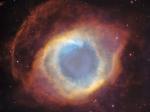 The Helix Nebula from Blanco and Hubble
The Helix Nebula from Blanco and Hubble
28.12.2004
How did a star create the Helix nebula? The shapes of planetary nebula like the Helix are important because they likely hold clues to how stars like the Sun end their lives. Recent observations...
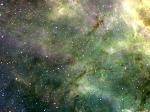 Tentacles of the Tarantula Nebula
Tentacles of the Tarantula Nebula
27.12.2004
The Tarantula Nebula is a giant emission nebula within our neighboring galaxy the Large Magellanic Cloud. Inside this cosmic arachnid lies a huge central young cluster of massive stars, cataloged as R136 and partially visible on the upper right.
|
January February March April May June July August September October November December |
|||||||||||||||||||||||||||||||||||||||||||||||||